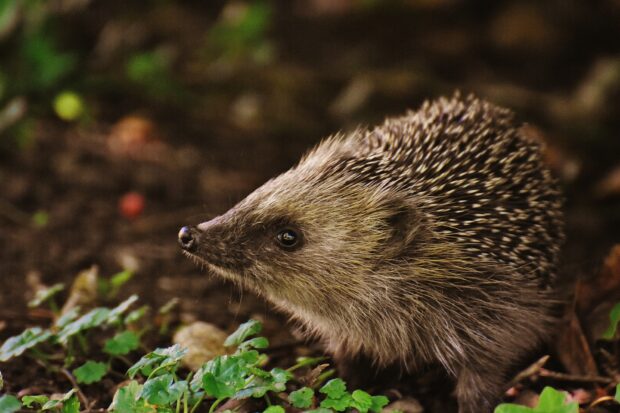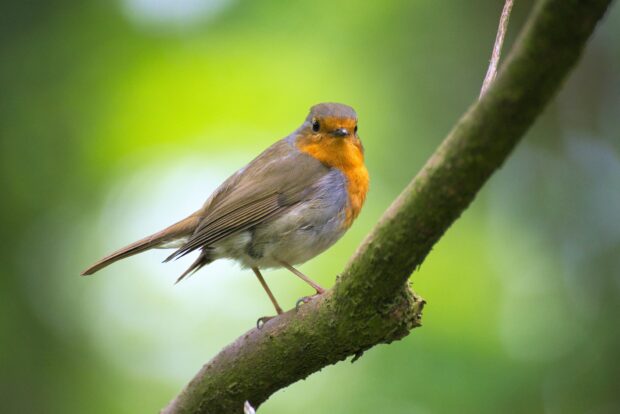
As Data Standards Lead at the Geospatial Commission I work across different programmes including public sector data improvement and land use looking at the geospatial data and improvements that can be made. As part of my work, I have been investigating species data and the path it takes from getting collected, mostly by volunteers, to being made available to be used to monitor species. Knowing a species geographic location is fundamental to many aspects of biodiversity conservation.
My work links into and begins to provide an evidence base for a number of commitments in the UK’s Geospatial Strategy, including to articulate the value of data for positive geospatial environmental outcomes and help form our land use data improvement strategy. It is also part of our developing public sector Data Improvement Programme (DIP). We’ve been running the DIP since 2018, working with our Partner Bodies, The British Geological Survey, The Coal Authority, HM Land Registry, Ordnance Survey, UK Hydrographic Office and The Valuation Office Agency to make public sector data more Findable, Accessible, Interoperable and Reusable and improve its quality, which are the essence of the FAIR principles.
How many species are in the UK?

The UK has a rich natural environment, with over 70,000 species of animals, plants, fungi and single-celled organisms.
Knowing the abundance and distribution of our species, whether that be a hedgehog or a moth, and understanding how trends are changing over time, is integral to managing and protecting these species.
There are thousands of volunteers in the UK contributing to species preservation. The Royal Society for the Protection of Birds (RSPB) State of Nature Report 2019 found that there were 18,700 volunteers contributing to structured monitoring schemes. An additional 70,000 volunteers also submit biological records to National Recording Schemes or Local Environmental Records Centres.
This work was also mentioned in the national press last month and further reinforced the crucial role of volunteers.
Why is species data important?
Scientific evidence clearly shows an alarming acceleration of biodiversity loss globally and has led to calls to address this before the damage becomes irreversible. Species diversity and abundance in the UK continues to decline and the UK failed to meet most of the CBD’s 2020 Aichi targets for biodiversity.
“The health of ecosystems on which we and all other species depend is deteriorating more rapidly than ever. We are eroding the very foundations of our economies, livelihoods, food security, health and quality of life worldwide.” That was the headline in May 2019 from the Intergovernmental Science-Policy Platform on Biodiversity and Ecosystem Services (IPBES) global assessment report.
These assessments rely on good biological data and the UK State of Nature report drew heavily on the records collected by many volunteers. As well as allowing us to understand pressures and trends on biodiversity, these data will be critical to providing evidence-based solutions to our climate and biodiversity crises.
New independent report out today by eftec

Today the Geospatial Commission published an independent report from eftec (Economics for the Environment) who specialise in environmental economics. The idea for the report came from a request from across government departments for us to look into data issues surrounding species data (as a component of biodiversity data), including as a key factor determining the allocation of land and land-use decisions where we’re conducting some wider data improvement work.
Our species data work kicked off last year in October 2020 and ran through to March 2021. A series of workshops, interviews and research was completed by a consortium of experts in this space led by eftec, supported by eCountability, Association of Local Environmental Records Centres (ALERC), the Biological Records Centre (UKCEH) and the National Biodiversity Network (NBN). Stakeholders taking part in the research included officials from both Central and Local Government, universities, NGOs, Record Centres and volunteer organisations, from both the terrestrial and marine sectors. I am very grateful for this cross-government work and using experts to get to the heart of the issue.
What does the report say?
The report found that the species data pathway is of great value to the UK, both to private sector activities and public policy, providing services that are essential to a wide range of decision-makers. The data pathway is fundamental to activities that interact, evaluate and change the environment and is key to informing strategy on how the environment is managed to benefit people and meet future challenges.
The current species data pathway has many strengths, including the extensive volunteer input and it enables a large amount of data to be recorded and shared. But it also has some perceived weaknesses whereby a more subjective and less standard approach to data capture and use can affect the quality of the data. Novel data capture methods, and developments in technology, are creating opportunities to accelerate rates of recording and standardise approaches to data sharing that could address some of these weaknesses. The biodiversity data system will need to adapt and develop new ways to realise the potential of the new technologies and innovation.
The report makes 14 recommendations to improve the species data landscape and many of these are focussed on the FAIR data principles that the UK Geospatial Strategy is supporting. This report argues that the costs of collecting species data are strongly outweighed by the benefits from use, estimating that for every pound spent, benefits of £14 to £28 are realised. The report notes that key benefits of improving this data could include achieving water industry and agri-environment objectives and avoiding delays in the land use planning system. The species data pathway has direct benefits that arise to those that collect and use the data (e.g., physical health and well-being), as well as indirect benefits through time savings by those that interact with data collectors and users.
Trailblazing Scotland
Although the eftec report is focused on England, it draws heavily on similar excellent work done in Scotland with the 2018 Scottish Biodiversity Information Forum (SBIF) review and covers the processes in the species data pathway and explores the uses of biodiversity data. The SBIF Review contained 25 Recommendations to help transform the data infrastructure within Scotland and at UK level. Although the Local Environmental Record Centre structures are slightly different in Scotland, in comparison to England, the issues affecting both are very similar, with the same UK organisations involved in biological recording in both countries. The SBIF Reviews' Recommendations were assessed by the Reports' authors for their applicability to England; they found that most of the Review Recommendations could be applied to the situation in England, albeit with the need to specifically tailor the actions required to deliver them to the local, regional and national situation within an England context. In Scotland, they are working to kick off the Better Biodiversity Data Project later this year which will implement some of the recommendations from the SBIF review including establishing a national data hub for Scotland.
This report highlights the invaluable work that volunteer wildlife recorders contribute to species data collection. If this volunteer contribution was lost it would cause major gaps in our knowledge and understanding of the species found in England and the Geospatial Commission would like to thank all those working in this space for their dedication.
How this fits with wider government environment policy

Earlier this year, the Dasgupta Review (commissioned by HM Treasury) called for changes in how we think, act and measure economic success to protect and enhance our prosperity and the natural world. Grounded in a deep understanding of ecosystem processes and how they are affected by economic activity, the new framework presented by the Review sets out how we should account for nature in economics and decision-making.
Government has a responsibility to biodiversity through the Environment Bill and other environmental policies. The Department for the Environment, Food and Rural Affairs mission is to restore and enhance the environment for the next generation, and to leave the environment in a better state. Defra has responsibility for protecting biodiversity, the countryside and the marine environment. They are supported by Natural England, the Joint Nature Conservation Committee, and the Environment Agency, among others.
With only six months until the all-important climate change talks at COP 26 in Glasgow and the UK striving towards net-zero, the environment and biodiversity are rightly getting more publicity than ever. High quality, current and accessible species data are essential to underpin environmental policy and land use planning. Implementing and evaluating outcomes from the Environment Bill, Biodiversity Net Gain and the new Environmental Land Management Scheme (ELMS) will depend on access to high-quality species baseline and monitoring data.
We hope you enjoy reading this Independent report and that we can strive towards making improvements that will help us reach our environmental targets. The findings will help inform the Geospatial Commission’s work on how to improve data to support decisions about land use and the environment.
Sign up to this blog to get an email notification every time we publish a new blog post. For more information about this and other news see our website, or follow us on Twitter and LinkedIn.